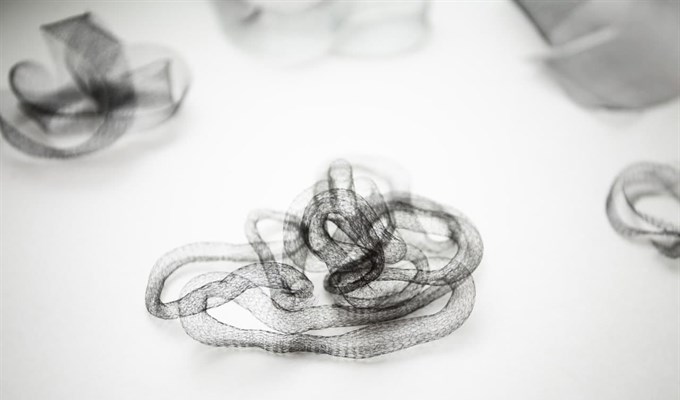Titanium nickel implants developed at TSU may be implanted in a patient abroad: under the megagrant led by Alexei Volinsky, a professor from the USA, the implants will be tested for international use.
The human body is extremely sensitive to intruders: it recognizes a foreign object and immediately tries to get rid of it. Even the smallest splinter can cause inflammation, not to mention implants meant to replace a bone or a joint. That is why implants should be biocompatible – this is a goal for material scientists all over the world.
Alexei Volinsky, professor in the Department of Mechanical Engineering at the University of South Florida, specialist in surface engineering of biomaterials, came to Tomsk to lead the work of a TSU megagrant in this area. He demonstrates several metallic objects – one is smooth, the other is rough, the third looks like a mesh. This one could be a vertebra, a piece of bone, this one a reconstructed fragment of a blood vessel or a sinew.
“All of them are made of titanium nickel, a shape memory material. It is not toxic, as, for example, cobalt alloys are. It has a good survival rate, unlike polymeric implants. It has unique mechanic properties – it is harder to destroy than any other material, even in an aggressive corrosive environment,” says Prof. Volinsky.
The structure of an implant depends on the way it is created. For example, a highly porous material for replacing bone tissue is created using self-propagating high-temperature synthesis. It is easy for biological tissue to grow through the coating, and so the organism does not recognize it as an intruder.
Ekaterina Marchenko, head of the TSU Laboratory of Medical Alloys and Shape Memory Implants, adds: for the implant to successfully function inside the body, it has to be rheologically compatible with biological tissues, to be as resistant as they are.
“The alloys we develop are superelastic, they can relax inner tension due to martensitic transformation. During in-vivo experiments, we learned that porous Ti-Ni endures more than 15 million cycles of bending and stretching,” explains Ekaterina Marchenko. “Thanks to viscoelastic behavior, the implant deforms along with the biological tissues in which it is integrated. High cyclic endurance allows porous Ti-Ni-based implants to safely function throughout life.”
The history of titanium nickel alloys at TSU began 30 years ago with Viktor Gunter. Tomsk surgeons have used Ti-Ni-based implants to replace large bone fragments lost to cancer. Their colleagues from Krasnoyarsk replaced an old implant in the patient’s spinal cord implants with a Tomsk development, because the old material started to dissipate and poison the tissues with decay byproducts.
However, the criteria for rheological compatibility have not been formulated yet, and the experts choose the materials based on their personal experience. The research team of physicists, material science researchers, and biologists led by Prof. Volinsky is going to solve this issue.
“Our main task is to describe fundamental principles of material-tissue interactions. We will be developing scientific criteria that will enable surgeons to choose the right material for the specific type of operation. As the result, we will have a set of recommendations based on biomechanical likeness. This will help in disseminating our development, and not only in Russia. A year ago in Israel, I met Dr. Sela, who encountered a relevant case during his practice. I sent him our paper on Ti-Ni-based implants and he was very interested in our technology. This can be the beginning of an international collaboration,” says Prof. Volinsky.
Based on the article by RIA TOMSK

